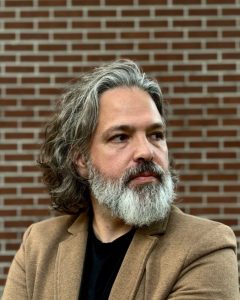JM101: Whirl Without End
Fairy Tales and the Weird
This course concluded in October 2024 and is now self-paced.
In his book After Finitude, when trying to characterize the omnipotent chaos he argues exists at the heart of reality, the French philosopher Quentin Meillassoux speaks of “something akin to Time, but a Time that is inconceivable for physics.” Not Time itself, mind you, not this or that time, but a time—real yet indefinite, lawless, limitless, radically free. In this respect at least, Meillassoux’s chaos ought to be familiar to all of us. Every child knows that “once upon a time,” anything can happen, for any reason whatsoever or no reason at all. Once upon a time, a wolf spoke to a little girl, a clutch of princes turned into swans, an entire kingdom fell asleep.
Fairy tales are weird. They are perhaps the weirdest of artifacts (if artifacts they are). For one, they flaunt the laws of nature, reminding us that such laws exist primarily in our minds, the world being perfectly thinkable—and therefore possible—without them. But for all that, fairy tales make sense. Too much sense, almost. The same tale lends itself to such varied and revelatory interpretations that it may seem designed as some kind of puzzle to be solved. When the story of Rapunzel can serve equally well to explain human psychosexual development, the quest for spiritual awakening, and the evolution of eukaryotic cells, you have to wonder how such a multivalent object can be possible. It’s as if the same string of numbers and symbols could serve as a mathematical equation in the laboratory and the score of a sonata in the concert hall. How could something so absurd produce so much meaning?
In this course, we will explore the mystery of fairy tales, approaching them as the great, anonymous artworks that they are. We will discuss their origins, structures, and functions, examining their power to generate and subvert meaning and order. We will contrast the sanitized versions of fairy tales popularized by Disney with the darker, more complex tales recorded by folklorists like the Brothers Grimm. We will see how the widespread notion that fairy tales are simply instructive devices for the moral education of children has it backwards. We will discover how these stories, often as uncanny and terrifying as any modern horror film, reveal profound truths about the human person, morality, and the cosmos.
Schedule
This course concluded in October 2024 and is now self-paced.
Why Take This Course?
Students will get to:
- Attend five lectures investigating the nature of fairy tales and analyzing a selection of fairy tales in depth.
- Gain permanent access to recordings of the lectures and discussions.
- Post, share, discuss, and exchange direct messages with the instructors and other students on the Weirdosphere platform.
- Become full-fledged members of a new online learning community, with a permanent discount on all future Weirdosphere classes by Phil Ford, J.F. Martel, and other thinkers of things strange and astonishing.
Instructor Bio

J.F. Martel is a Canadian author, filmmaker, lecturer, and cultural critic known for his work on the arts, philosophy, and the uncanny. With a background in film production and an interest in metaphysics, Martel explores the intersections of creativity and the ineffable, challenging conventional boundaries of understanding. He is best known for his book Reclaiming Art in the Age of Artifice, which argues for the intrinsic value of art beyond commodification and utilitarianism. Martel’s writings often appear in various publications, where he discusses the spiritual and existential dimensions of culture. As a filmmaker, he has directed several documentaries and short films. Through his work, Martel invites audiences to reconsider their perceptions of reality and embrace the mysteries that lie beneath the surface of the workaday world. He co-hosts the Weird Studies podcast with the music historian Phil Ford.